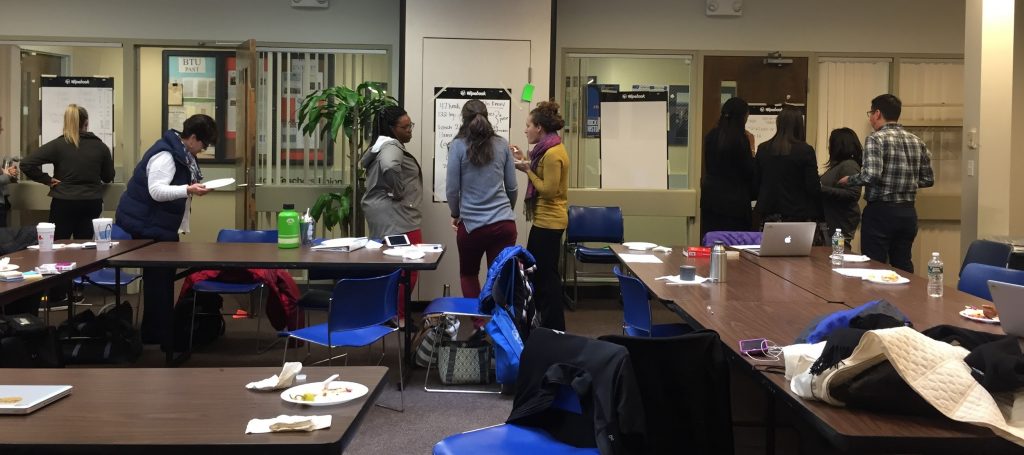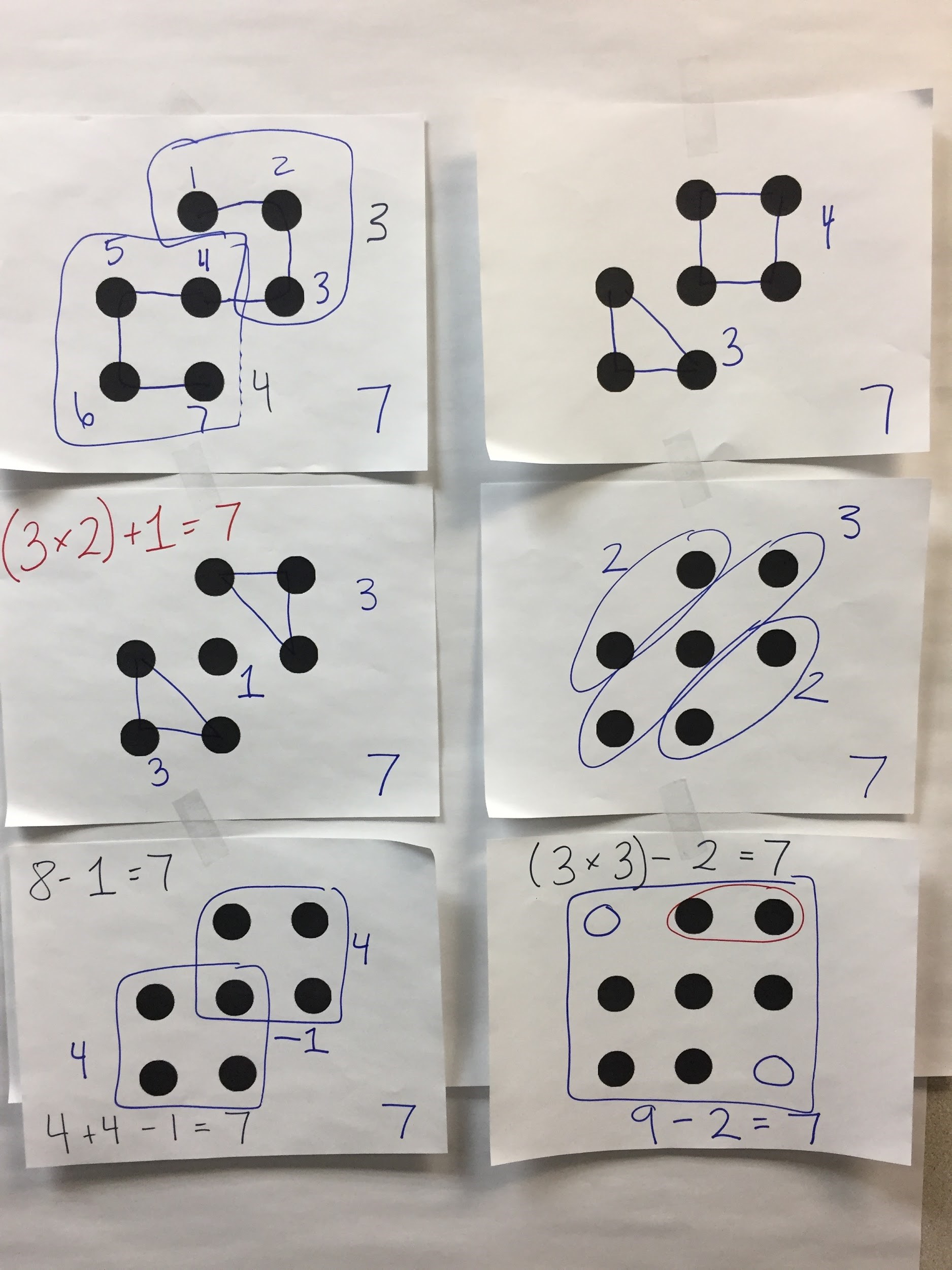Research & Insights / By Teachers For Teachers: What made teachers’ practice change?
By Teachers For Teachers: What made teachers’ practice change?

By Heidi Fessenden (District Elementary Math Coach, Cambridge Public Schools), Maggie Roth (Second grade teacher, Match Community Day Public Charter School), and Michelle Sirois (Fourth grade teacher, Perry Elementary School)
Please check out part one and part two of this series.
What made teachers’ practice change?
We were curious to find out more about which parts of our teacher-led math course, Bridging Classrooms, had led to such deep changes in teachers’ practice. To find out more, we interviewed some of the course participants in pairs. A few themes emerged as to why this professional development had such an impact on their teaching.
Safety for Adults, Safety for Kids
A few teachers, particularly early-career teachers, spoke about how safe they felt in this group. “I could take my shoes off there, literally and figuratively,” Shona Daye, a 4th grade teacher at the King School, said. The first day, she said, she was worried that she wouldn’t solve the math task correctly. “I was looking around, trying to see if I was using the ‘right’ strategy,” she recalled. She soon realized that getting the “right” answer or using the correct strategy was not the focus of the course. Instead, the focus was on the many ways we can arrive at solutions and on the depth and variety of thinking in the group.
“...After we shared out, you know, that fear just dissipated, and looking at different perspectives, I had all these epiphanies. And I wanted my students to feel the same way.”
Shona realized that if this safe environment to explore thinking made her feel safer, it would do the same for her students. “Allowing the children to explore and not give right answers, but just explore -- That is phenomenal, that is huge, and totally engages everybody. Everybody was willing to take a risk. Nobody had a right or wrong answer. And that was exciting. That was really exciting.”
Experiencing Math as Learners
Shona and Emily Kmetz, a Tech Boston math teacher, both talked about how important it was to acknowledge they struggled with the same math problems they gave to their students. “My students loved hearing that I had trouble with the same problem they were solving,” Emily said. It also provided insights into how it feels to take on a challenging problem, learn and understand someone else’s strategy, and a window into the different strategies their students might use.
Teachers had experiences of being stuck, of struggling to collaborate with a partner, of feeling frustrated because someone else solved the problem faster than they did -- all of which helped them remember the challenges of being a math student.
Teacher-led
In written reflections and interviews, many of the participants in the course mentioned that their curiosity was piqued by the idea of teacher-led PD. “These are teachers who are in the classroom every day, like me,” Retha Reynolds, a 5th grade teacher at the Sumner, said. “They know.”
When teachers had questions about the reality of implementing something in the classroom, or a challenge they face daily, the facilitators had ideas because they face the same challenges. Teachers experienced the course as more practical and useful than a class led by an “expert” who is not a teacher.
Expertise in supporting students with special needs to talk, struggle, and achieve more

Several participating teachers work primarily with students with special needs. They expressed frustration with the number of professional development sessions they have attended that don’t speak to the specific needs of their students. Although this course was not billed as a course directed toward special educators, the facilitators were all teachers who often teach students with special needs. The focus on making math a more visual, creative, and discussion-oriented subject appealed to the special educators in the group. They enthusiastically tried out new instructional routines and protocols they learned in Bridging Classrooms, such as number talk images.
Retha enthusiastically adopted Three Act Tasks as her pedagogy of choice after doing the Toothpick Task in class. (Read a summary of the structure of a Three Act Task here, and see how Dan Meyer breaks one down here.) After our course was over, she reflected on how well the visual and storytelling aspects of many of the tasks she did in our course worked for her students.
When she started to use Three Act Tasks and have her students notice and wonder, she noted that, “The kids [were] answering the questions and talking to each other about what they saw happening in the picture before I could even present what the problem was.”
For Retha, getting her students talking about a visual or a story was the key to both increasing conversation and engagement, and strengthening her students’ ability to persevere and struggle.
“I felt like before I was kind of guiding them too much. I was doing too much for them…. I began getting them to really talk about the math [first] which gets them to thinkabout what it is they’re doing. I felt like I was able to just step back and let them struggle with it.”
With these reflections, we are continuing to share our learning with partners and leaders in the math community. Recently, Heidi and Michelle fpresented to leaders in math education at the National Council of Supervisors of Mathematics (NCSM) conference in San Diego. In doing so, they asked participants - and we ask you - "What allows teachers and students to feel safe taking risks doing math in your setting?" and "How can you increase opportunities for teachers to feel safe and take risks as learners?"
Melissa Frascella (Math Dept Chair / Eighth grade math teacher, Boston Collegiate Charter School), Meredith Hart (Sixth grade teacher, Haley Pilot School), and Alia Verner (Math Director / Instructional Coach, TechBoston Academy) also contributed to this blog post.
Part One - By Teachers for Teachers: Learning and Growing as Math Educators
Part Two - By Teachers For Teachers: Changing the Culture of Math Class



